
- Home
- News
- Analysis
- States
- Perspective
- Videos
- Education
- Entertainment
- Elections
- World Cup 2023
- Features
- Health
- Business
- Series
- Economy Series
- Earth Day
- Kashmir’s Frozen Turbulence
- India@75
- The legend of Ramjanmabhoomi
- Liberalisation@30
- How to tame a dragon
- Celebrating biodiversity
- Farm Matters
- 50 days of solitude
- Bringing Migrants Home
- Budget 2020
- Jharkhand Votes
- The Federal Investigates
- The Federal Impact
- Vanishing Sand
- Gandhi @ 150
- Andhra Today
- Field report
- Operation Gulmarg
- Pandemic @1 Mn in India
- The Federal Year-End
- The Zero Year
- Premium
- Science
- Brand studio
- Home
- NewsNews
- Analysis
- StatesStates
- PerspectivePerspective
- VideosVideos
- Entertainment
- ElectionsElections
- Sports
- Loading...
Sports - Features
- BusinessBusiness
- Premium
- Loading...
Premium
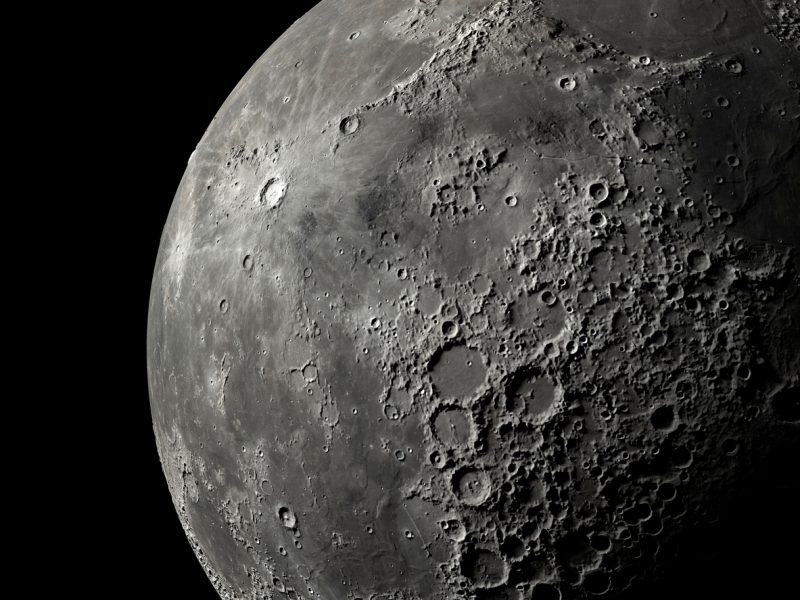
Chandrayaan-3: Four ways to go to the Moon

With a manoeuvre performed in the intervening night of July 31 and August 1, the Chandrayaan-3 (CY3) spacecraft is on its way for a rendezvous with the Moon. There are four ways to go to Moon. Direct method The direct method was used by the Soviets and Americans in the 1960s and 1980s in their Luna and Apollo missions. The relatively simple technique can take one to Moon within a few days....
With a manoeuvre performed in the intervening night of July 31 and August 1, the Chandrayaan-3 (CY3) spacecraft is on its way for a rendezvous with the Moon.
There are four ways to go to Moon.
Direct method
The direct method was used by the Soviets and Americans in the 1960s and 1980s in their Luna and Apollo missions. The relatively simple technique can take one to Moon within a few days. But, one needs a powerful rocket that can give adequate impulse for reaching the Moon directly.
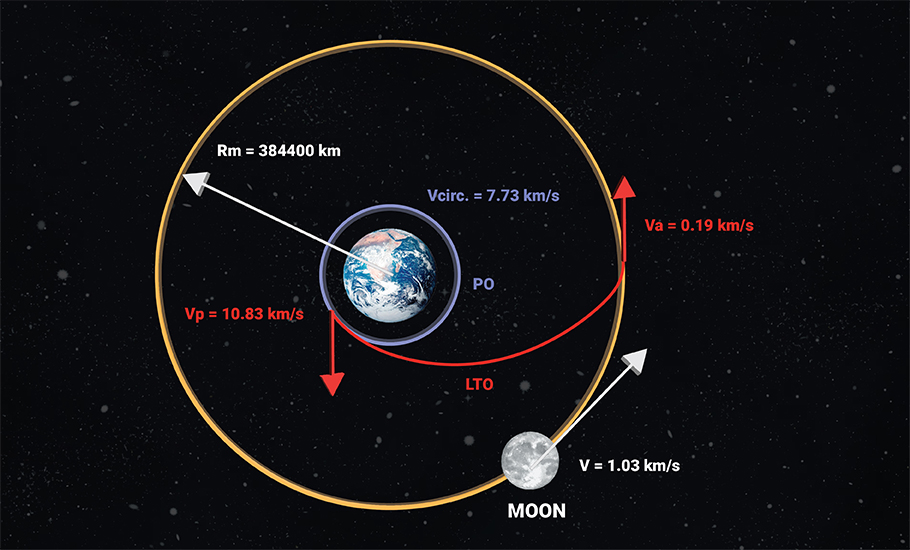
Further, when one arrives at the Moon, the craft would be travelling at breakneck speed, that one has to use powerful rockets to slow it down. This meant a lot of fuel had to be carried along for various manoeuvres.
Spiral transfer
The spiral transfer method raises the height of the craft step by step to reach the orbit of the Moon. The European SMART-1 mission used this method. Launched on September 27, 2003, the craft made 332 orbits around the Earth before it was captured by the gravity of the Moon on November 15, 2004, after 415 days of the launch.
Also read: Chandrayaan-3 decoded: Here’s how ISRO plans to soft land on Moon in 45 days
In this method, as the orbit becomes bigger and bigger, the craft will get closer and closer to the Moon. The path will be made such that the ship encounters the Moon at the point of apogee, which is the greatest distance from Earth in the elliptical orbit.
At each lunar swing-bys, the tug of the Moon’s gravity helps widen the spiral orbit. As the craft passes closer than 60,000 km, the pull of the Moon is more pronounced. Slowly and steadily, the vessel reaches a point in space called Lagrange Point No. 1, or L1 for short. This is the point in the straight line connecting the Moon and Earth, where the gravitational effects of the Moon and the Earth are in balance. Once the craft crosses this point, it comes under the influence of the Moon’s gravity. Typically this transfer orbit technique will take more than six months for trans-lunar insertion that is, hurling the craft in a trajectory that will make it arrive at the Moon.
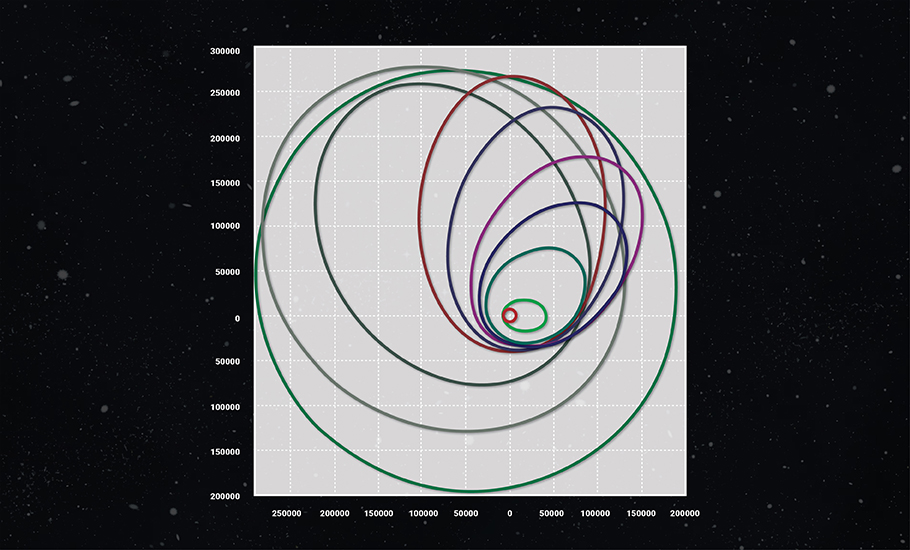
As seen in the above image, in the SMART-1 mission, the orbit expands and, at the same time, tugged by the lunar swing, rotates, ultimately taking the craft to a point where the Moon can capture the ship.
WSB transfer
The Weak Stability Boundary (WSB) transfer is more complex. The craft has to be taken to the point in space where the Earth and Sun’s gravity balance each other (Lagrange points) to arrive at the Moon with low relative velocity.
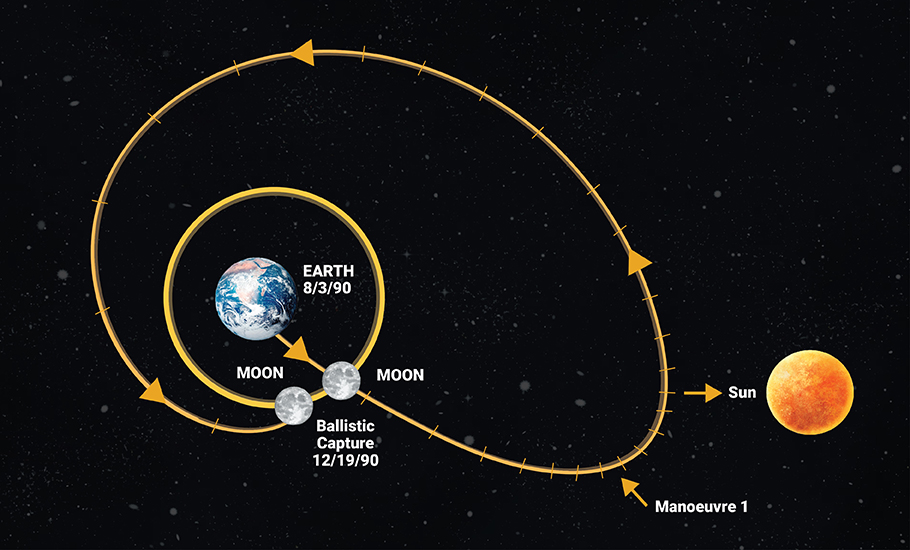
Also read: Chandrayaan-3 launch: Far more than reaching for the Moon
The Japanese Hiten spacecraft was initially designed to use spiral transfer to reach the Moon. Due to the failure of the thrusters, it failed to reach the expected orbit. Then the Japanese tried a radically new method, WSB transfer, to get the lunar orbit. This method would require nearly three to four months for trans-lunar insertion.
Phasing loop transfer
The fourth method is called phasing loop transfer, used by all three Chandrayaan missions of ISRO. Initially, the craft is placed in an elliptical Geo Transfer orbit. The engines of the propulsion modules are burned every time the ship reaches the perigee, the point nearest to Earth in the elliptical orbit. The added energy takes the craft higher and higher, mimicking the spiral transfer method. However, when the vessel has achieved sufficient impulse, the trans-lunar insertion burn is made at a crucial point. The craft then flies towards the Moon. ISRO has mastered the art of this transfer method and using it for all its deep space mission operations.
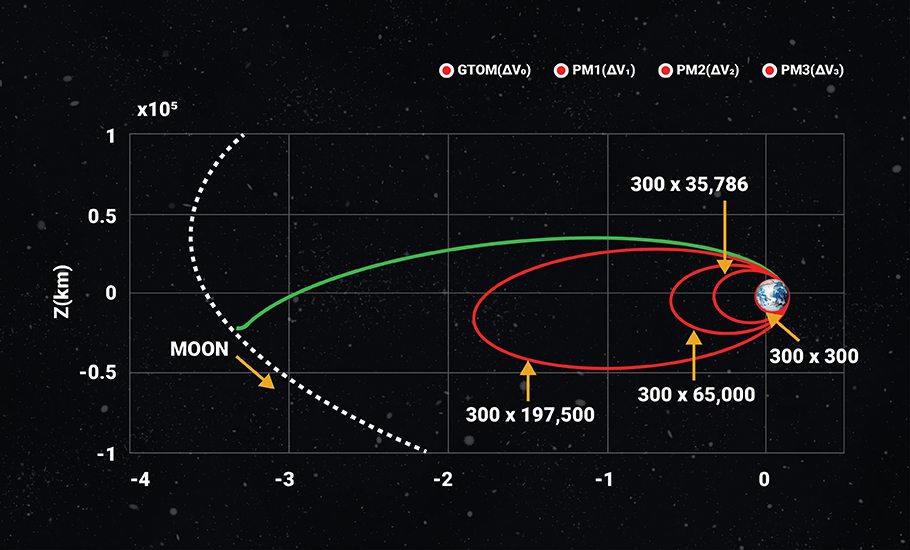
Typically the phased loop transfer may take two to three weeks from the launch for the craft to be inserted into the trans-lunar injection. In addition to the Chandrayaan missions, this technique was used by Clementine (1994), SELENE (2007) and Chang’E-1 (2007) spacecraft to reach the Moon.

